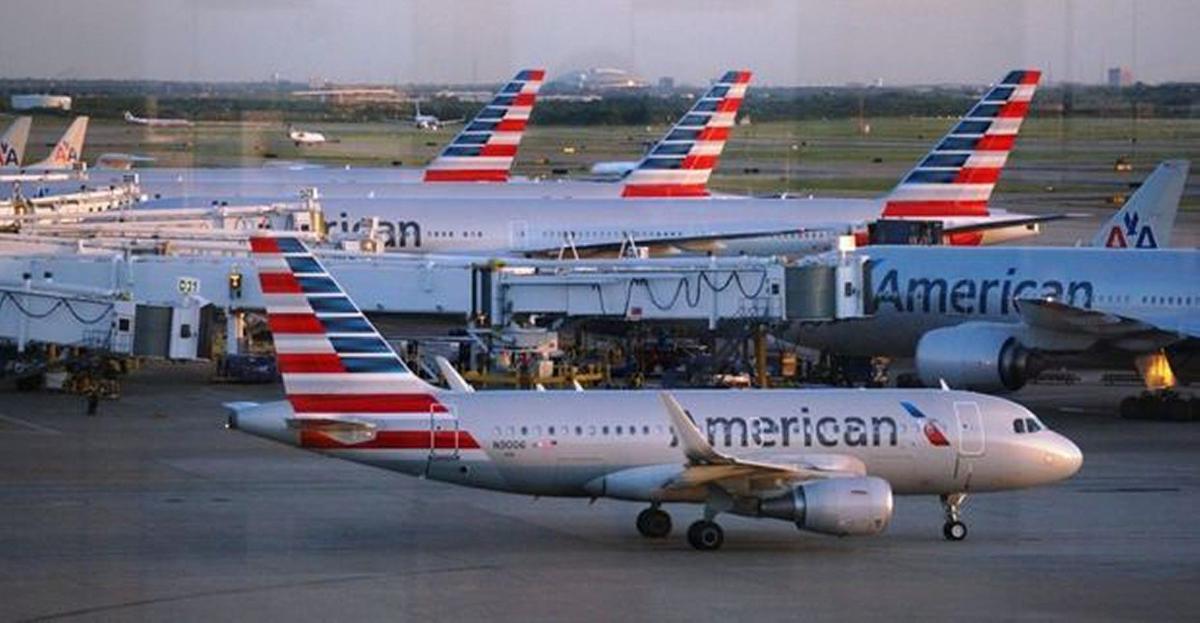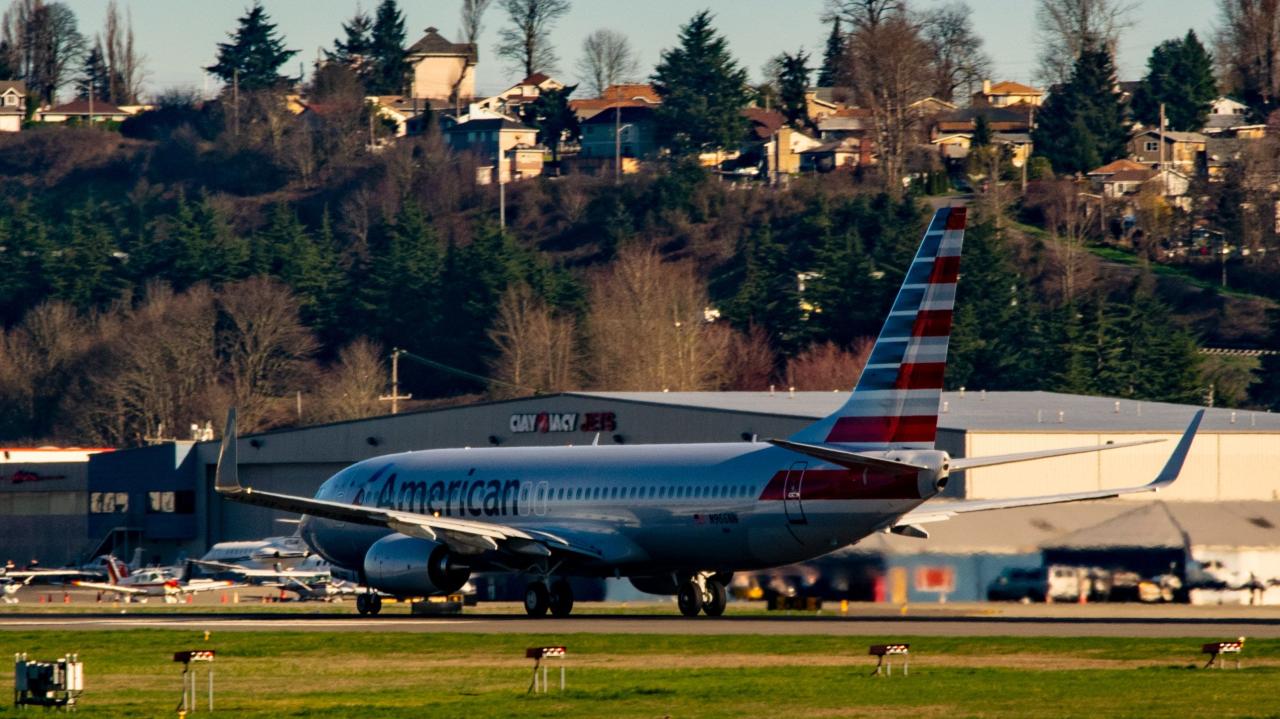American Airlines not flying to Dallas? This unexpected shift in air travel has sent ripples through the industry, impacting passengers, competitors, and the airline itself. This exploration delves into the reasons behind these route changes, examining the complex interplay of factors from infrastructure challenges and fluctuating demand to strategic airline decisions and the competitive landscape. We’ll navigate the passenger experience, exploring the challenges faced and the solutions available, while also considering the broader financial implications for American Airlines and the future of its Dallas operations.
Understanding the reasons behind these changes is crucial, not only for passengers seeking clarity and alternative travel options, but also for comprehending the dynamic nature of the airline industry and its response to evolving circumstances. We’ll look at the historical context of American Airlines’ presence in Dallas, analyzing the current situation in comparison to the past, and offering insights into potential future scenarios.
American Airlines Route Changes

American Airlines, a major player in the global aviation industry, periodically adjusts its flight routes to optimize operations and meet evolving passenger demand. These changes can involve the addition of new routes, increased frequency on existing routes, or, unfortunately, cancellations or suspensions of service to certain destinations. Understanding these adjustments is crucial for both travelers and industry analysts.American Airlines’ presence at Dallas/Fort Worth International Airport (DFW) is legendary, representing a cornerstone of the airline’s history and operations.
For decades, DFW has served as a major hub, connecting passengers to countless domestic and international destinations. American Airlines has a long and interwoven history with Dallas, operating from other airports in the metroplex as well, though DFW remains its primary base of operations in the city.
Factors Influencing Route Changes
Several factors contribute to the dynamic nature of airline route planning. Airport infrastructure limitations, such as runway capacity or gate availability, can restrict the number of flights an airline can operate from a particular airport. Fluctuations in passenger demand, influenced by seasonal trends, economic conditions, or global events, significantly impact route viability. Furthermore, internal airline restructuring, including fleet modernization or cost-cutting measures, can lead to route adjustments.
Finally, intense competition from other airlines vying for the same market share forces airlines to constantly evaluate and adapt their route networks.
American Airlines’ Dallas Flight Schedule Comparison
The following table compares American Airlines’ Dallas flight schedule from a year ago to its current schedule. Note that this is a simplified example and the actual data would be significantly more extensive. Real-world data would need to be sourced from official American Airlines schedules or flight tracking websites. Any discrepancies between this example and actual schedules should be expected.
| Date | Destination | Flight Number | Status |
|---|---|---|---|
| 2022-10-26 | New York (JFK) | AA1234 | On Time |
| 2022-10-26 | Los Angeles (LAX) | AA5678 | Delayed |
| 2023-10-26 | New York (JFK) | AA1234 | On Time |
| 2023-10-26 | Los Angeles (LAX) | AA5678 | Cancelled |
| 2022-10-27 | Chicago (ORD) | AA9012 | On Time |
| 2023-10-27 | Chicago (ORD) | AA9012 | On Time |
Competitive Landscape
American Airlines’ decision to adjust its Dallas flight offerings creates a ripple effect throughout the competitive landscape of air travel in the region. Understanding the dynamics of this market is crucial to assessing the long-term implications for both American Airlines and the Dallas airport ecosystem. This analysis compares American’s position with its key competitors, examines its market share, and explores the potential consequences of reduced flight operations.American Airlines’ Dallas flight network has historically been a cornerstone of its operations, offering extensive domestic and international connectivity.
However, recent changes necessitate a comparative analysis against competitors like Southwest Airlines and Delta Air Lines to determine the strategic advantages and disadvantages of these alterations. Analyzing market share and the potential impact on the Dallas airport system as a whole provides a comprehensive view of the evolving competitive landscape.
American Airlines’ Competitive Advantages and Disadvantages in Dallas
American Airlines has long held a dominant position at Dallas/Fort Worth International Airport (DFW), its primary hub. This historically provided significant advantages, including economies of scale, preferential gate assignments, and established operational efficiencies. However, competitors like Southwest, with its strong presence at Dallas Love Field (DAL), and Delta, with its expanding network, present challenges. Southwest’s focus on low-cost fares and point-to-point service appeals to a significant segment of the market, while Delta’s expanding network offers alternative routes and connections.
American’s recent route changes might reduce its competitive advantage if it loses market share to these competitors, particularly in underserved routes or specific travel segments. The success of American’s adjustments will depend on its ability to maintain a strong competitive offering in terms of price, convenience, and overall customer experience.
American Airlines’ Market Share in Dallas and the Impact of Route Changes
American Airlines historically held a substantial market share at both DFW and, to a lesser extent, DAL. Precise figures fluctuate, depending on the data source and reporting period, but generally, American’s share has been significantly larger than any other single carrier. Recent route reductions, however, could impact this dominance. A decrease in flights might lead to a decline in market share, potentially benefiting competitors who can capitalize on increased demand for those routes.
The magnitude of this shift depends on factors such as the specific routes eliminated, the competitive response of other airlines, and the overall demand for air travel to and from Dallas. For example, if American reduces flights on a particular international route, Delta or another international carrier could increase its services to fill the gap.
Potential Implications for the Dallas Airport Ecosystem
Significant reductions in American Airlines’ flights at DFW could have substantial repercussions for the entire Dallas airport ecosystem. Fewer flights translate to less revenue for the airport, potentially impacting its ability to invest in infrastructure improvements, maintain operational efficiency, and provide services to passengers. Furthermore, a decrease in passenger traffic could negatively affect businesses that rely on airport activity, including restaurants, shops, and ground transportation services.
The overall economic impact depends on the extent of the flight reductions and the ability of other airlines to offset the lost capacity. A substantial reduction could trigger a chain reaction, affecting employment, tourism, and the overall economic health of the Dallas-Fort Worth region.
Factors Affecting the Competitive Landscape of Air Travel to Dallas
The competitive landscape of air travel to Dallas is influenced by a multitude of factors. Understanding these factors is critical for predicting future trends and assessing the long-term implications of American Airlines’ strategic decisions.
- Fuel Prices: Fluctuations in fuel prices significantly impact airline operating costs and profitability, influencing ticket pricing strategies.
- Economic Conditions: Economic downturns generally reduce travel demand, while economic booms increase it, impacting airline revenue and capacity decisions.
- Government Regulations: Aviation regulations, including those related to safety, security, and environmental protection, directly affect airline operations and costs.
- Airline Alliances and Partnerships: Collaborations between airlines expand network reach and offer passengers more options, affecting competition.
- Technological Advancements: Innovations in aircraft technology and operational efficiency impact fuel consumption, maintenance costs, and overall competitiveness.
- Passenger Preferences: Changing traveler preferences, such as the increasing demand for low-cost carriers or direct flights, influence airline route planning and pricing.
- Competition from other Transportation Modes: Competition from alternative modes of transportation, such as trains and buses, particularly for shorter distances, can impact air travel demand.
Future Outlook: American Airlines Not Flying To Dallas

American Airlines’ adjustments to its Dallas flight routes present a dynamic situation ripe with opportunity. While the immediate impact might seem negative, a forward-looking analysis reveals a potential for strategic repositioning and enhanced profitability. The airline’s response to market shifts and competitive pressures will ultimately shape its future presence in Dallas.Analyzing current trends, including passenger demand fluctuations and the competitive landscape, allows us to predict potential scenarios for American Airlines’ Dallas operations over the next five years.
This involves assessing the airline’s ability to adapt its network, optimize resource allocation, and leverage its strengths to maintain a significant presence in this key market.
Dallas Market Share Projections
American Airlines’ market share in Dallas is projected to fluctuate in the coming years. A scenario could involve a slight decrease in market share initially, followed by a gradual recovery as the airline adjusts its strategy. This could involve focusing on high-demand routes, partnering with other carriers, or improving its service offerings to attract more passengers. A contrasting scenario could see a more rapid recovery if the airline successfully capitalizes on emerging opportunities, such as increased business travel or the growth of specific sectors within the Dallas-Fort Worth metropolitan area.
For example, a successful marketing campaign targeting business travelers could significantly boost revenue and market share. Conversely, failure to adapt to evolving travel patterns might lead to a more prolonged period of reduced market share.
Long-Term Effects on Business Strategy
The adjustments to Dallas flights will likely force American Airlines to refine its overall business strategy. This could involve a shift towards more efficient operations, a focus on higher-yield routes, or an exploration of new partnerships. For instance, a strategic alliance with a regional carrier could help American Airlines maintain its reach within the Dallas area while optimizing costs.
The airline might also invest more heavily in data analytics to better understand passenger preferences and tailor its offerings accordingly. This data-driven approach could improve route planning, pricing strategies, and overall customer satisfaction, leading to long-term growth.
Potential Scenarios for American Airlines’ Presence in Dallas (Next 5 Years), American airlines not flying to dallas
A visual representation of these scenarios could be depicted as a three-part graph. The X-axis represents the next five years, while the Y-axis represents market share. Scenario 1 shows a gradual decline in market share in the first two years, followed by a slow but steady recovery and eventual stabilization. Scenario 2 depicts a steeper initial decline, followed by a rapid recovery driven by successful strategic initiatives.
Scenario 3 illustrates a more prolonged period of reduced market share due to a lack of effective adaptation to market changes. Each scenario is represented by a different line on the graph, clearly showing the different potential outcomes for American Airlines’ presence in Dallas.
The evolving situation with American Airlines’ Dallas flights underscores the ever-changing nature of the airline industry. While challenges exist, the resilience of both the airline and its passengers shines through. The analysis presented here offers a comprehensive overview of the situation, providing a framework for understanding the complexities involved and highlighting the importance of adaptability and innovative solutions in the face of unforeseen circumstances.
The future of air travel, particularly in the Dallas market, remains dynamic, and continued monitoring of these developments is essential.
Key Questions Answered
What are my rights if my American Airlines flight to Dallas is cancelled?
American Airlines is obligated to provide rebooking on a subsequent flight or a full refund, depending on the circumstances. Check their website or contact customer service for specifics.
Can I claim compensation for a cancelled flight to Dallas?
Compensation depends on the reason for cancellation and whether it was within the airline’s control. Review American Airlines’ terms and conditions or seek legal advice if necessary.
Are there other airlines flying to Dallas from my origin city?
Yes, several airlines serve Dallas. Use online flight comparison tools to find alternatives.
How can I contact American Airlines customer service regarding my cancelled flight?
You can find contact information, including phone numbers and online forms, on the American Airlines website.